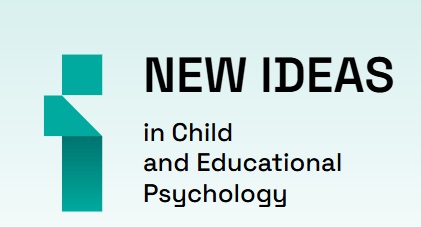Keywords
students
Publications
Polyakov S.D., Belozerova L.A., Vershinina V.V., Danilov S.V., Krivtsova N.S. (2019). “Clip thinking” Among High School and University Students: A Research Experience. Moscow University Psychology Bulletin, 4, 126-143
Background. This article is devoted to the study of the phenomenon of “clip thinking.” The connection of this topic with modern sociocultural processes is indicated. The methodological foundations of the study are the cultural-historical approach and the "style paradigm" of the study of cognitive processes. The most significant conceptual ideas and experimental data in the study of “clip thinking” in recent years have been highlighted.
It is noted that so far, there has not been an unambiguous scientific understanding of the phenomenon of “clip thinking,” and there are not enough techniques for studying it.
Objective. The main objective was the study of the “clip-integrity” thinking of high school and university students.
Design. The article describes the author’s method of studying the “clip-integrity” of thinking, as well as the results of its testing on a sample of senior schoolchildren (89 people) and university students (76 people).
Results. The study revealed that the proportion of university students with systemic (holistic) thinking is significantly higher than in the sample of schoolchildren. In schoolchildren, expressed “clip” thinking occurs one and a half times more often than among university students. The authors consider the age-typical characteristics of the respondents and the characteristics of the socio-cultural development situation, characterized, inter alia, by a change in the main information medium, as the main factors determining the identified features of thinking.
Conclusion. The possibilities of the methodology they developed allowed the authors to clarify the tasks of studying the cognitive characteristics of high school students and university students as relates to the phenomenon of “clip thinking” and its relationship with “holistic thinking,” and to set new research objectives.
Received: 07/08/2019
Accepted: 09/10/2019
Pages: 126-143
DOI: 10.11621/vsp.2019.04.126
Keywords: “clip thinking”;
system thinking;
senior schoolchildren;
students;
Available Online: 08/31/2019
Petrenko V.F., Gladkih N.Yu., Mitina O.V. (2016). Psychosemantic analysis of political leaders’ perception (on the data of South Korean students). Moscow University Psychology Bulletin, 2, 64-87
Psychosemantic approach is most in demand when it comes to research collective representations, allowing to identify the underlying attitudes and stereotypes that are poorly reflected upon, or hidden because of social undesirability, and therefore difficult to diagnose. Political leaders’ perception is just such an example. The article deals with a number of images of contemporary political leaders and historical figures who have played at one time a significant role in world politics in the student audience perceptions of South Korea. Psychosemantic author’s technique “The image of a political leader” was used to obtain empirical data. 107 subjects (females and males) took part in the survey. The study included the construction of multi-dimensional semantic spaces, projecting the operational model of categorical perception structures of political leaders. For data analysis methods of multivariate statistics were used (principal component analysis and discriminant analysis).
Pages: 64-87
DOI: 10.11621/vsp.2016.02.64
Keywords: political psychology;
psychosemantics;
a political leader's image;
semantic space;
methods of multivariate statistics;
students;
South Korea;
Available Online: 09/20/2016
Denisova Т.N. (2013). Features of ideas about time in schoolchildren and students with various expressiveness of motivation of achievement.Moscow University Psychology Bulletin, 1, 111-122
Results of research of ideas of time are given in article at 63 schoolchildren (14— 16 years) and 68 students (21—23 years), divided into 3 groups: with the expressed motivation of achievement (MD), with the expressed motivation of avoiding of failure, with not expressed motivational pole. Th e analysis of results of respondents by C. Osgud’s technique «Semantic diff erential» and a projective technique «Draw time» revealed distinctions of data of groups on such indicators, as ideas of the present, an emotional sign of estimates of an image of time and its components, level of the concept of time, a form of the image of time, a ratio of estimates of the present and the future. Th e conclusion is drawn that idea of respondents of time can serve prediktory MD; the obtained data can be used in psychodiagnostics and consultative psychological aid to schoolchildren and students.
Received: 12/19/2011
Pages: 111-122
Keywords: achievement motivation;
idea of time and its components;
motivation of avoiding of failure;
schoolchildren;
students;
Available Online: 03/30/2013
Bovina I.B., Golynchik E.O. (2012). Multipolar world: From politology to social psychology. Moscow University Psychology Bulletin, 1, 49-60
The concept of “multipolar world” is analyzed in the presented article; some perspectives of social-psychological research of forming multi-polarity in the present world are outlined. The students’ representations of multipolar world and of the countries-centers of influence in the modern world were analysed from the social representations theory perspective.
Pages: 49-60
Keywords: multipolar world;
social representations theory;
countries-centers of influence in the modern world;
representations of Russia;
students;
Available Online: 03/30/2012
Tsvetkova L.A.(2010). Prevention of psychoactive substances abuse in student communities: integrative theoretical model by G. Gonzalez. The Moscow University Psychology Bulletin, 3, 142-151
The article presents g. gonzalez’s integrative model of alcohol and drug abuse prevention on campus. This theoretical structure bases on models such as health belief model, social learning theory and problem behavior theory. it focuses on different elements — the individual level, the level of the environment and the level of interaction between the individual and the environment. we present concrete activities included in the integrative model, analyze the effectiveness of preventive programs among university students and the experience of using the model at the University of Florida. gonzalez’s model can be used to assess the effectiveness of prevention programs.
Received: 06/01/2010
Pages: 142-151
Keywords: students;
abuse of psychoactive substances;
prevention;
model;
intervention;
personality;
environment;
interaction;









